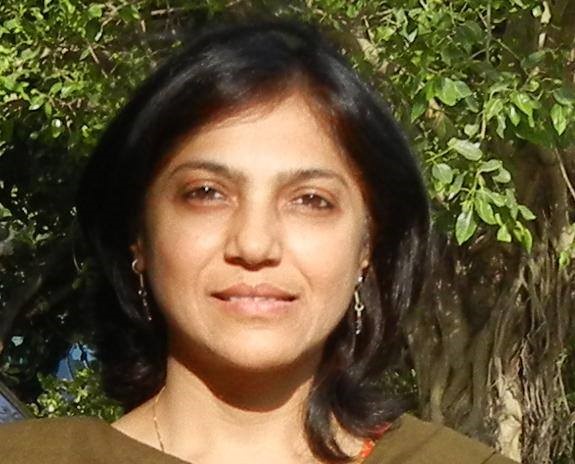Naaz Khair
 Anu Ramdas: What is Right To Education (RTE) for the Bahujan and Pasmanda people?
Anu Ramdas: What is Right To Education (RTE) for the Bahujan and Pasmanda people?
Naaz Khair: The Constitution of India that came into force in 1950 mandated the State to provide free and compulsory education to all children aged six to fourteen years. However, the provision was made in the form of a Directive Principle of State Policy viz. Article 45, which was not enforceable by the Courts. Thereafter, it took over five decades before education for children became a Fundamental Right via the 86th Constitutional Amendment, in 2002. During this period, there were intense educational movements, global and Indian, and child rights campaigns. The UN Child Rights Convention identified education as one of the many child rights, the World Bank and European Union, etc, guided the process of educational reforms within the country, there was the abolition of child labor, and so on. Vide the 86th Constitutional Amendment the Right to Education (Article 21A) was made part of the Fundamental Right to Life (Article 21). The Fundamental Right to Education achieved in 2002 became a reality with the passing of the Right to Education Act in 2009. The Right to Education (RTE) Act, 2009 laid down the provisions for implementing the Fundamental Right to Education guaranteed by the Constitution.
The RTE Act, 2009, came into force on the 1st of April, 2010 and was widely celebrated as it signaled an end to discrimination in education. All children in the age group 6 -14 years irrespective of caste, creed, gender, ethnicity, disability etc became equal for the purpose of education. All social, traditional and historical grounds for limiting education only to certain sections/groups in society were removed. In other words, all barriers to education were removed. This was a significant development for Bahujan-Pasmandas (SC/ST/OBC and Pasmandas) battling historical deprivation in the field of education.
In 1961, while for the total population the literacy rate was 28.31%, it was 10.27% and 8.53% for SC and ST respectively. In 2011 (close to the year of enactment of RTE Act, 2009), the figures were 74.04% literacy for the total population and 66.07% and 59% literacy for SC and ST populations respectively. Pending OBC caste census there is no literacy rate available for OBC from census data. However, according to a paper produced by Surjit Bhalla, on the index of educational attainment, OBC was 7.1 in 1999 which increased to 10.7 in 2011. Within OBC, the index of educational development for OBC Muslims (Pasmanda) was 6.3 in 1999 and 8.4 in 2011. The paper concluded that in 2011 OBC Muslims were lagging far behind the average OBC and were behind all other OBC sub-categories (Christian, Hindu and Sikh) and were only marginally better off (by 0.3 points) than SC/ST in educational attainment.
So, even after massive educational expansion and educational reform measures since independence, social category gaps in education continued to show. The RTE Act, 2009 held out a promise of systematic bridging of all social category gaps in education in the near future. However, the post-RTE period has only seen the systematic dismantling of the educational rights of children. Child labor (consisting predominantly of bahujans and pasmandas) has come back with the President giving his assent to the Child Labour (Prohibition and Regulation) Amendment act, 2016. The proposed New Education Policy, 2016 goes off on a tangent instead of focusing on measures for effective implementation of RTE. While less than 10% schools are RTE compliant (compliance to RTE norms and standards), government schools are closing around the country and privatization of school education (proliferation of education shops) is taking place rapidly. Key RTE provision of non-detention at the elementary stage has been scrapped through a recent amendment of the RTE Act. Non-detention was an important provision, which was seen as a boon for children from excluded communities (SC/ST/OBC/Pasmanda) as it checked their dropout from school. Dropout (generally high) of SC, ST, OBC, Pasmanda children is quite unavoidable given their historical exclusion from education. Ill-equipped as they are, becoming familiar with the rigors of the schooling process run by an education administration and teaching faculty dominated by upper castes (savarnas, ashrafias, etc) was going to take some time. And, therefore no detention served their interest a lot. Given the aforesaid, the right to education as a human right and fundamental right is severely under threat with crippling impact on Bahujans!
Anu: How is RTE visualized with the reservation policy for SC, ST and OBC communities?
Naaz: RTE Act, 2009, provides for reservations in the context of un-aided private schools and specified category schools (Kendriya Vidyalaya, Navodaya Vidyalaya, Sainik Schools and others that may get notified as specified category schools). Article 12 (1) C of the Act makes a provision of 25% reservations in class-I or pre-primary, whichever is the first class, for children belonging to weaker sections (EWS) and disadvantaged groups (DG) i.e. 25% of students in class-I or pre-primary, whichever is the first class must comprise of EWS and DG children. The Act, however, does not define the EWS and DG categories.
States across India have defined EWS and DG variously. The reservations are not confined to caste categories SC/ST/OBC and EWS alone. Some states have included orphans, HIV positive children, homeless children, disabled children, children of widows of army-men and handicapped parents, etc, under EWS and DG. Karnataka, for instance, defines 11 categories eligible for 25% RTE (EWS and DG) reservations. While most of the states mention EWS, SC and ST upfront for coverage under Article 12 (1) C, mention of OBC is not found uniformly across states under the Article. Odisha covers children of manual scavengers, homeless children, street children and beggars etc under ‘educationally and socially backward’ instead of OBC as one would expect, under Article 12 (1) C.
Other examples of coverage under Article 12 (1) C: A number of states mention castes under EWS e.g. Karnataka and Punjab. However, Punjab does not place an income limit for SC admissions. Maharashtra covers OBC and SBC under EWS. Rajasthan covers SC, ST, OBC, and SBC under EWS, with income limit. Tripura covers only BPL SC, ST, and OBCs under DG. Meghalaya covers SC, ST under EWS. Jharkhand covers SC, ST, and minority with income limit and so on and so forth.
There are key issues affecting proper implementation and monitoring of RTE provision: Article 12 (1) C including fake income and caste certificates, difficulties in making income and especially caste certificates, high dropout rate of children admitted under RTE quota, non-availability of category-wise and sub-category-wise disaggregated information relating to admissions under the RTE quota and by ‘specified category’ schools (details of RTE admissions under each specified category school viz. Kendriya Vidyalaya, Navodaya Vidyalaya, Sainik Schools, etc. Within unaided private schools, Minority unaided schools are exempt under Article 12 (1) C of the RTE Act.
Anu: Do you see the RTE as the precursor discourse of 10% EWS?
Naaz: SC, ST and OBC reservations is a hard-earned gain of the anti-caste struggle. The casteist forces have opposed and interfered with their effective implementation of the right since the beginning. These forces cannot and have never conceded anything to the peoples that have been their subjects/made their subjects by caste historically. At every level, day to day, policy-making and implementation evidence suggest caste discrimination and oppression despite constitutional safeguards.
The use of economic criteria instead of sub-categorization is nothing but a divisive and casteist strategy coined by the savarnas/ashrafias (and upper castes of other religions) to weaken SC, ST, and OBC as a majority community. The economic criteria were first implemented under OBC reservations by introducing the concept of the creamy layer and in the discussion, above we find that the economic criteria have been applied on SC and ST also, along with OBC, under 25% RTE reservations. So, there has been a dilution of SC, ST and OBC reservations preceding the 10% EWS quota. The 10% EWS quota has no ‘oppressed caste’ connotation to it, rather it provides reservations to the ruling section of the population.
Anu: What is the state of Pasmandas’ access to education and employment and how do you think 10% EWS will impact them?
Naaz: The term Pasmanda (which means those who have been left behind) is used for both OBC and SC, ST Muslims. Dalit Muslims do not as yet enjoy SC status under the Constitution due to a discriminatory provision under Article 341 of the Constitution that keeps them out of the Scheduled Caste list on grounds of religion. According to a report prepared for the National Commission for Minorities, in 2004-05, almost half the dalit Muslim population in the rural areas was not literate (48.8%), almost like it was for dalit Hindus in rural areas (48.53% illiterate). The not literate among OBC Muslims in rural areas was slightly better at 47.36%. In terms of Pasmanda access to employment, Khalid Anis Ansari, Pasmanda commentator and Professor at Glocal University has argued in his researched works that pasmandas are highly underrepresented in public employment whereas the Ashraf section of the Muslim population is over-represented, in at least four out of six sectors of public employment identified in the Sachar Committee report (Central Security Agencies, Railway, Central PSU, SPSC Recommendation for selection, University Faculty and University-Non Teaching).
The application of economic criteria to SC, ST and OBC admissions under the RTE quota in many states and difficulties associated with obtaining caste certificates and caste prejudices in general means more and more SC, ST and OBC have to compete in the open category, after the 10% EWS quota has seats reserved for upper castes but not for SC, ST, and OBC. Media reports based on RTI findings show that upper castes have a monopoly over general category admissions and employment. Minority institutions are exempt from RTE reservations. Further, Pasmanda activists have been demanding reservations for pasmandas in Muslim minority institutions including Muslim minority higher educational institutions. Aligarh Muslim University is a case in point.
This is the transcript of an interview with Naaz Khair, Pasmanda activist. The interview was conducted by Anu Ramdas, Editor, Round Table India.
~~~
Naaz Khair is a Development Professional, Pasmanda Activist and Director, Aspire India Foundation.
Anu Ramdas is the founder editor of Round Table India.










